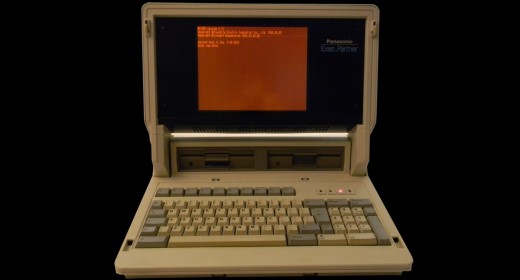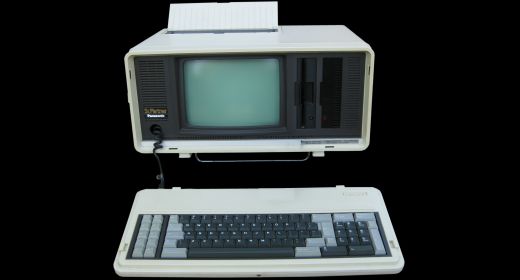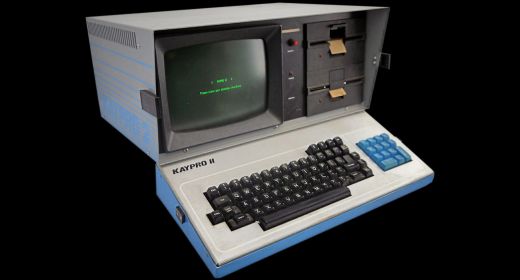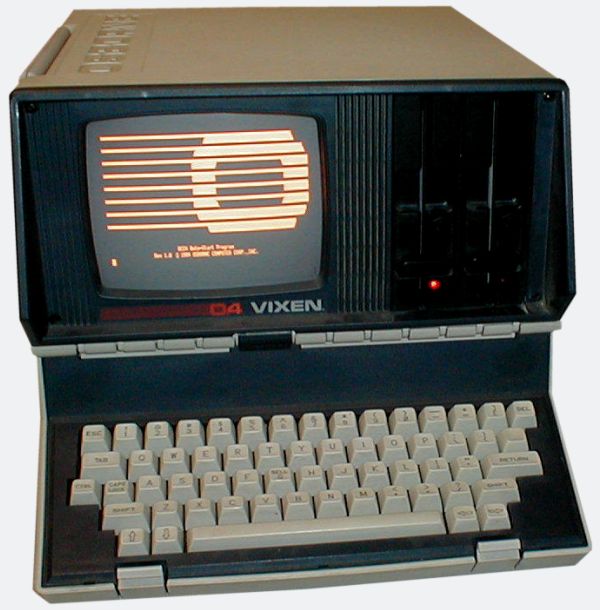
The Osborne Computer Corporation offered the Osborne Vixen computer in 1984, just as they were about to go bankrupt. This machine was not officially released by Osborne, but by a consultant named Fred Coury. It was a natural development from the earlier Osborne 1 and was also named “Osborne 4” by some. It was created as a portable computer with the fall-open keyboard exposing the screen and floppy drives. Those who say it was never offered for sale are rebuffed by those who claim to have bought one, but from another company, Worswick Industries.
Thankfully the people from Osborne Computers, or Fred Coury, had some creative design ability. The Osborne Vixen was one of those rare old computers that did not go with the flow of color. The exterior case of the machine was the same color as its counterpart; beige. But the interior of the computer was a nice forest green color, a nice departure from tradition. The Osborne Vixen was portable, but was deemed a “luggable” computer, similar to a suitcase in its design. The keyboard flopped open from the case and was not detachable. The carrying handle was on the side, similar to luggage.
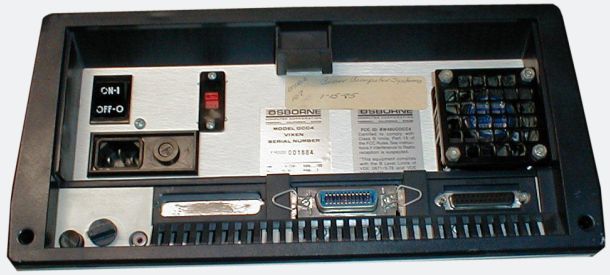
The inner workings of the Osborne Vixen were close to standard for the time. The processor was a Zilog Z80 chip that ran at four megahertz. The random access memory ( RAM ) was rated at 64 kilobytes. Two 5.25 inch floppy disc drives were included. They occupied the front of the machine in a vertical position. The drives used double density discs. The screen was an amber display that could create 24 lines of information distributed in the 80 column format. It was seven inches in diameter. The whole assembly weighed 18 pounds and was rumored to be able to fit under the seat of an airplane. The size of the Osborne Vixen was 12 5/8 inches by 16 1/4 inches by 6 1/4 inches.
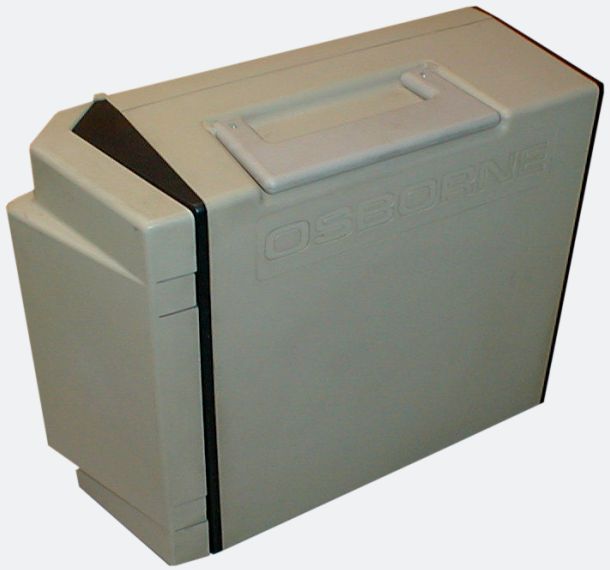
The operating system used by the Osborne Vixen was CP/M. This platform was a prequel to the Microsoft MS DOS operating system. It was created ten years before the Vixen came along by Gary Kildal. It is said that MS DOS was simply a clone of the CP/M operating system. The acronym stands for “Control Program for Microcomputers”. The Vixen came with a software package with word processing abilities ( Wordstar ), a spreadsheet calculator called Supercalc, a programming language called MBASIC, a graphical program called Osboard, a system utility named TurnKey, a data interchange program named MediaMaster and a game; Desolation. The Mediamaster program allowed the Vixen to connect with more than 200 computers.
The Osborne Vixen came with a price tag of $1298 dollars. An upgrade to a 10 megabyte hard disk jacked the price up to $1498 dollars. The Vixen was no match for the IBM personal computers of the day and their MS DOS platform. This made the Vixen an obsolete computer very quickly.
